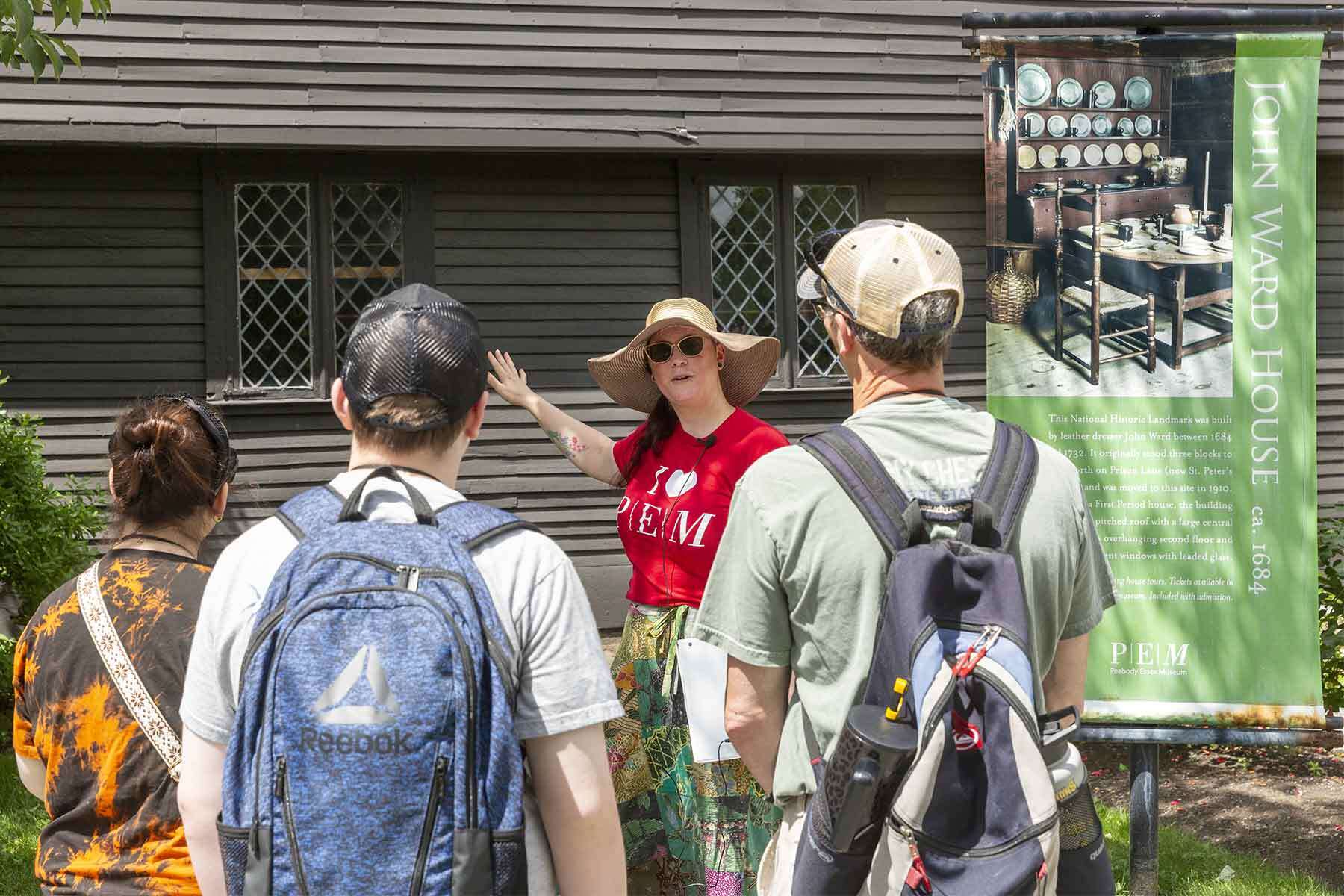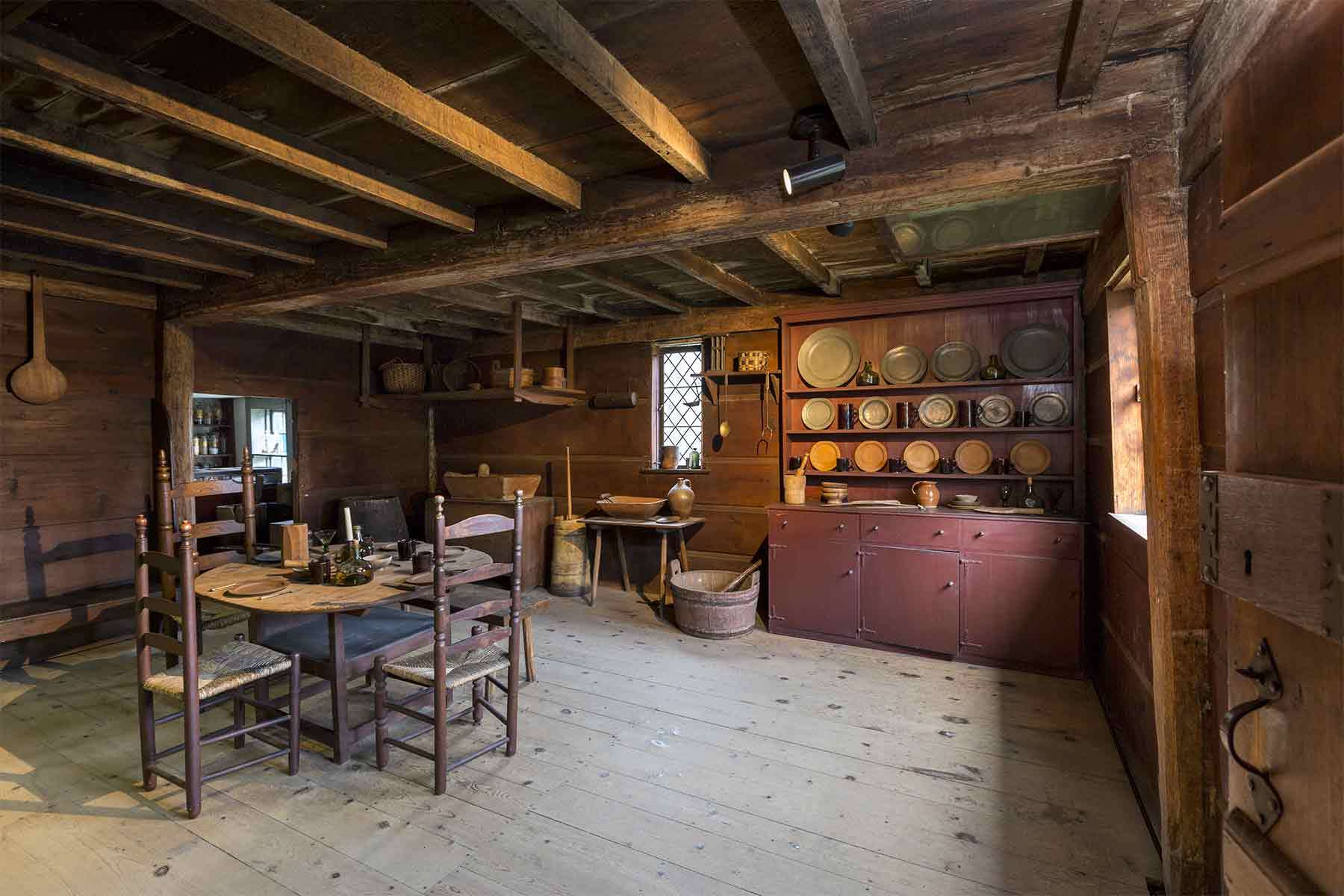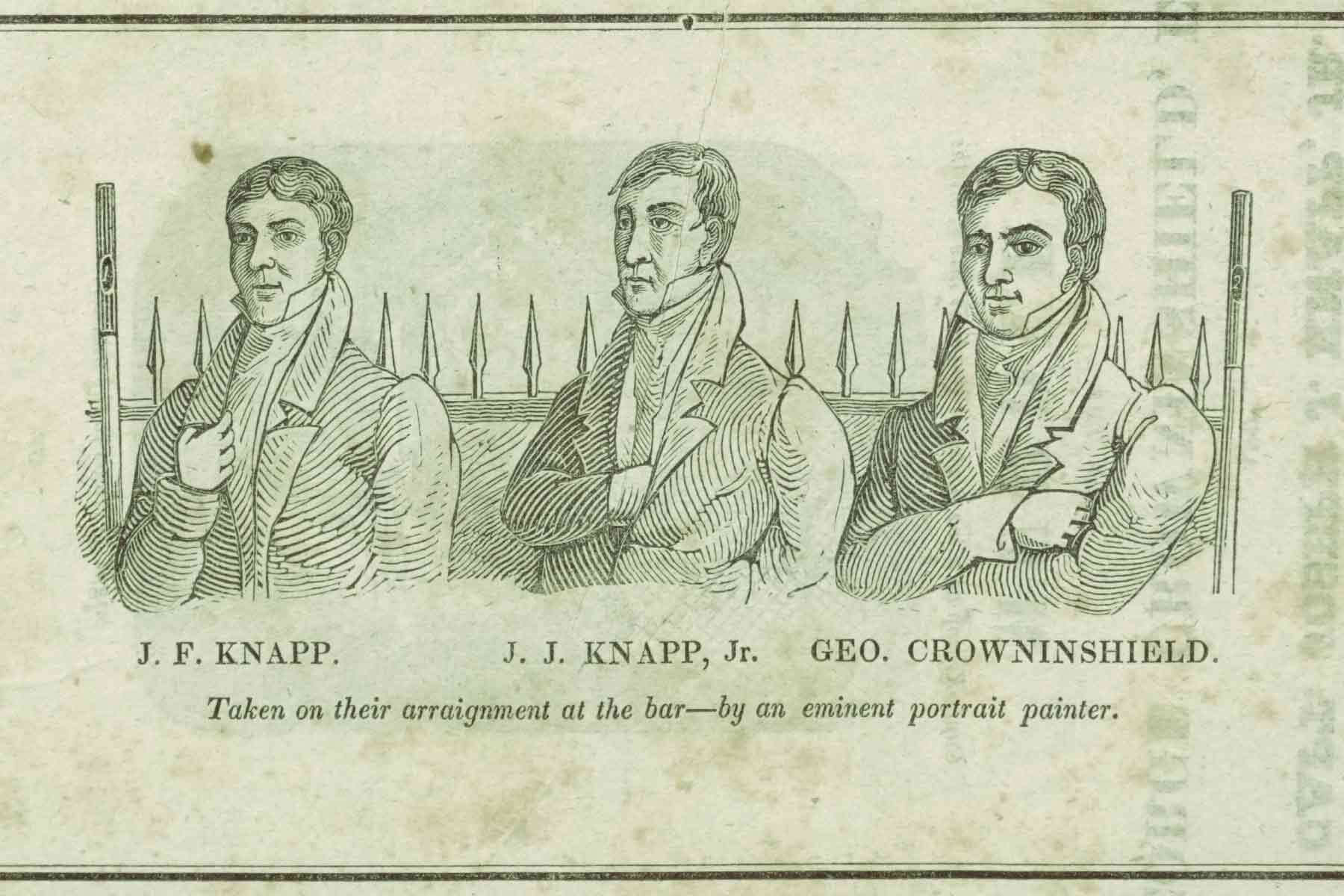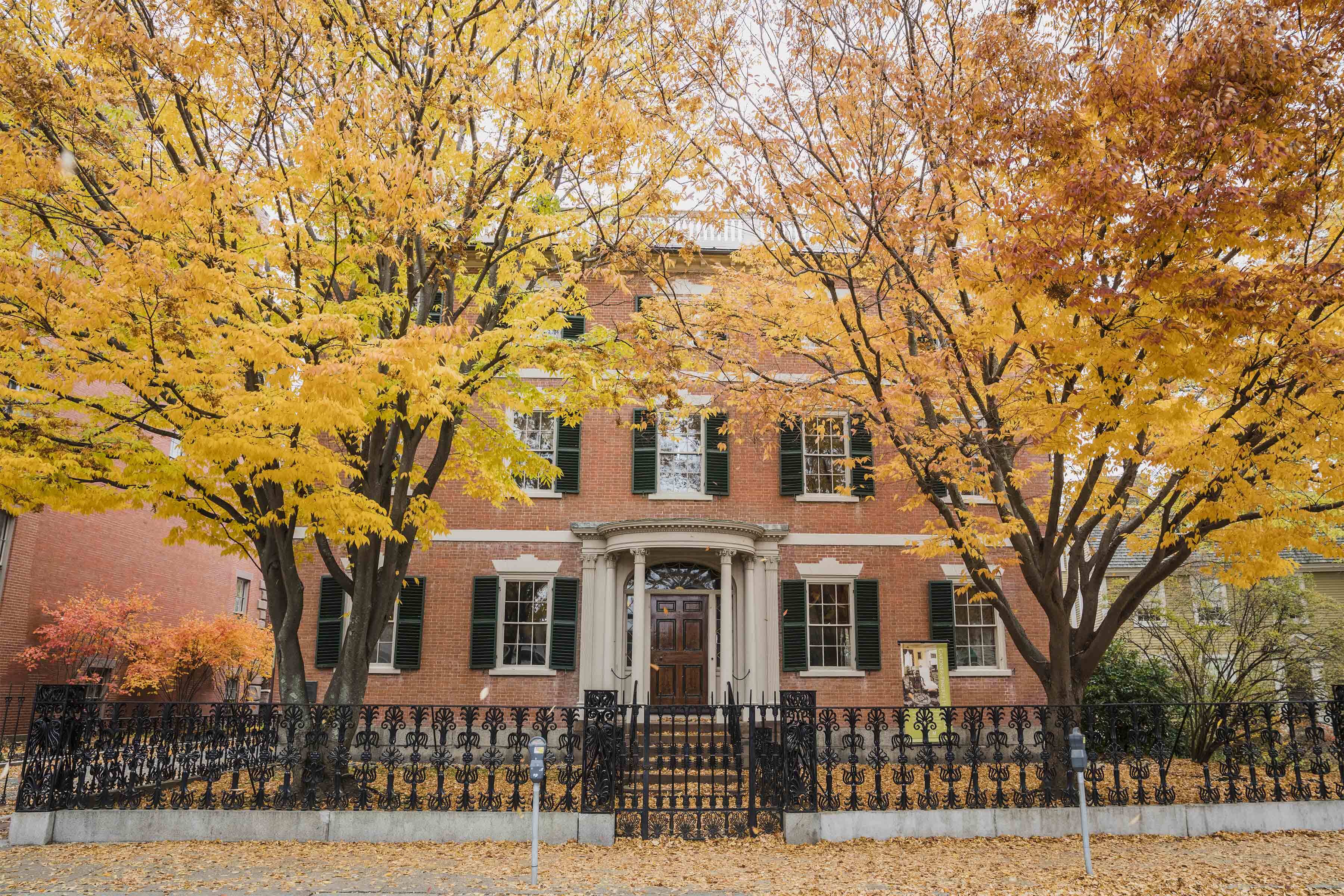
CONNECTED | Oct 10, 2025
Behind the scenes of PEM’s historic walking tours
“Every time we do this, we get asked a question we’ve never heard before,” said Andy Stark as they greeted people in front of the Peabody Essex Museum. Stark is one of the expert guides on PEM’s historic walking tours: Brick by Brick: Salem’s Hidden Architectural Stories, an in-depth look at architecture across downtown Salem (from a millionaire’s mansion to a working-class sailor’s house) and Sinister Streets: Witch Trials, Murders and Literary Legends, which highlights some eerie events from the city’s history.
FEATURED IMAGE: Gardner-Pingree House, Photo by Bob Packert/PEM.
Brick by Brick: Salem's Hidden Architectural Stories, PEM Walking Tour. Peabody Essex Museum. Photo by Kathy Tarantola/PEM.
As a costumed tour guide dressed as Uncle Fester from The Addams Family walked by, the PEM guides shared how they have been interacting with colorful characters and visitors from all over the world. The job takes a combination of a love of learning and a drive to share that information with others, said guide Alina Ivanova. For instance, when randomly asked where to find the yellow building with all the pumpkins, she was able to rattle off the address of a private home on Federal Street where over-the-top decorations have earned the owners an Instagram following of nearly a million.
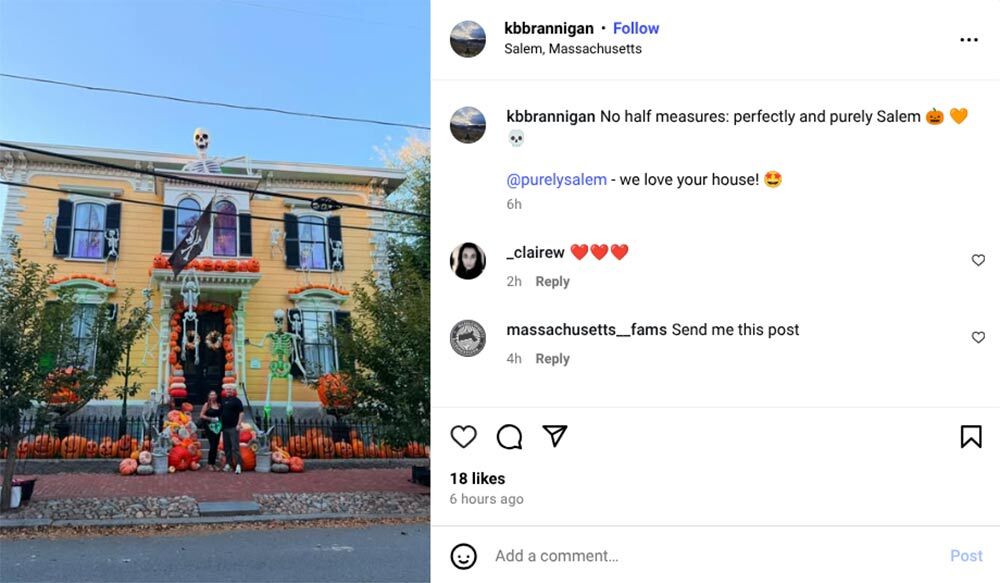
A beloved, unofficial Salem landmark on Federal Street.
This early October day was the first of the season where crispness crept into the shady side of the street, and the tourists were chock-a-block on a Thursday morning. “I was forewarned that Salem gets kooky starting October 1, but this is pretty wild,” said Merle, who came up from Florida with his wife Caren to visit Caren’s sister Ellen and her husband Chip in Marblehead. Chip and Ellen had signed up to become members of PEM to take advantage of the tour ticket discount, though they didn’t need much convincing, Ellen said.
The foursome had much to dive into in Salem, since the sisters are descendents of one of the women accused of witchcraft in 1692 and they are fans of historic architecture. “I appreciate architecture, but am not a scholar,” said Chip, adding that his brother is an architect. “But I’m never more moved than by architecture.” The family soon embarked on a conversation about the way people feel when interacting in good design.
Every time we do this, we get asked a question we’ve never heard before.
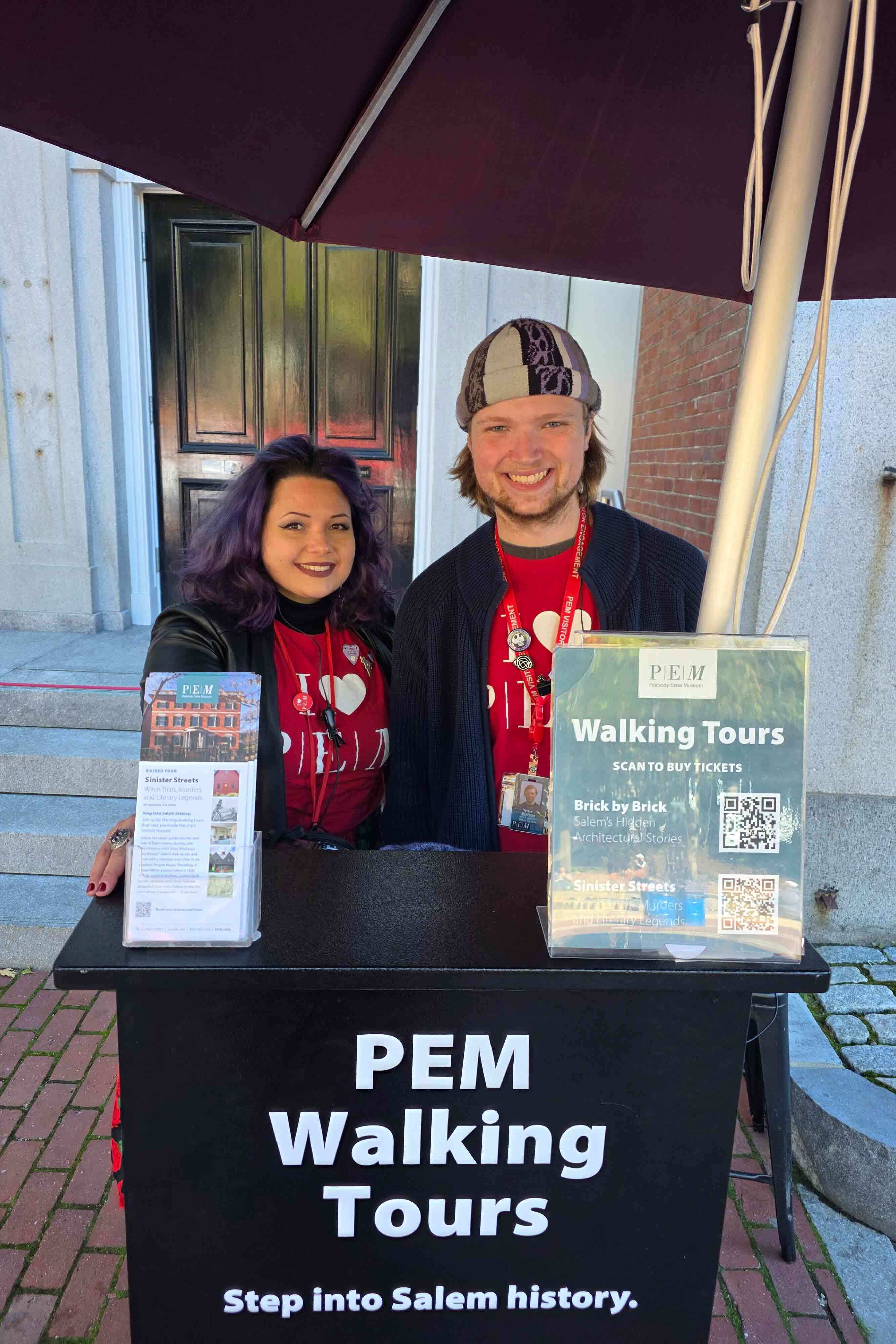
PEM walking tour guides Alina Ivanova and Ben Feron greet people in front of the museum. Courtesy photo.
PEM’s walking tours were created just for that reason: to give a sense of how people lived during the last 400 years in Salem. The Brick by Brick tour examines how building materials and stylistic choices tell a story of a particular culture, time, place and family. Along the way, visitors learn how the city’s history of colonization, revolution and maritime trade shaped its people and architecture. And, of course, the events of 1692 are woven throughout.
As guide Ben Feron gathered the crowd in front of East India Marine Hall, he started at the very beginning, going back to the museum’s founding in 1799, and explained that objects brought by the PEM’s entrepreneurial seafaring founders could range from an ostrich egg to a piece of jewelry. Introduction complete, the group went on to the John Ward House, built in 1684 for a successful leatherworker and originally located opposite the jail used during the Salem Witch Trials. With its picturesque, moody appearance and diamond-paned windows, it’s a destination for the Instagram set. Our tour group heaped words of encouragement on a bride and groom getting their photo taken in front of the red roses set against the darkly painted clapboards, an hour before they tied the knot.
Inside the John Ward House, 2017, Photo by Kathy Tarantola/PEM.
Inside, Feron, who majored in anthropology in college, explained how the phrase “sleep tight” came from maintaining beds where mattresses were supported by rope. In the kitchen, he gestured at the mortar and pestle and explained the role it played in grinding the spices that came in on nearby ships and flavored meat pies and spice cakes. He shared how the average 17th- or 18th-century family might keep a “perpetual stew” boiling on the fire. The group asked all kinds of questions about tools in the massive fireplace and the beams overhead. The beams were shipped down from Casco Bay, Maine, explained Feron. “That shows the family and the city’s industrial prowess from early on,” he said.
At the next stop, sitting intimately side by side in the tiny Derby-Beebe Summer House, the group expressed their wishes to relax and stay put for the day as the warm sun streamed through the windows. “I tell people it’s like a detached porch,” said Feron of the quaint little building that was designed as a wealthy homeowner’s garden respite and tearoom. “One guy described it as a proto man cave.”
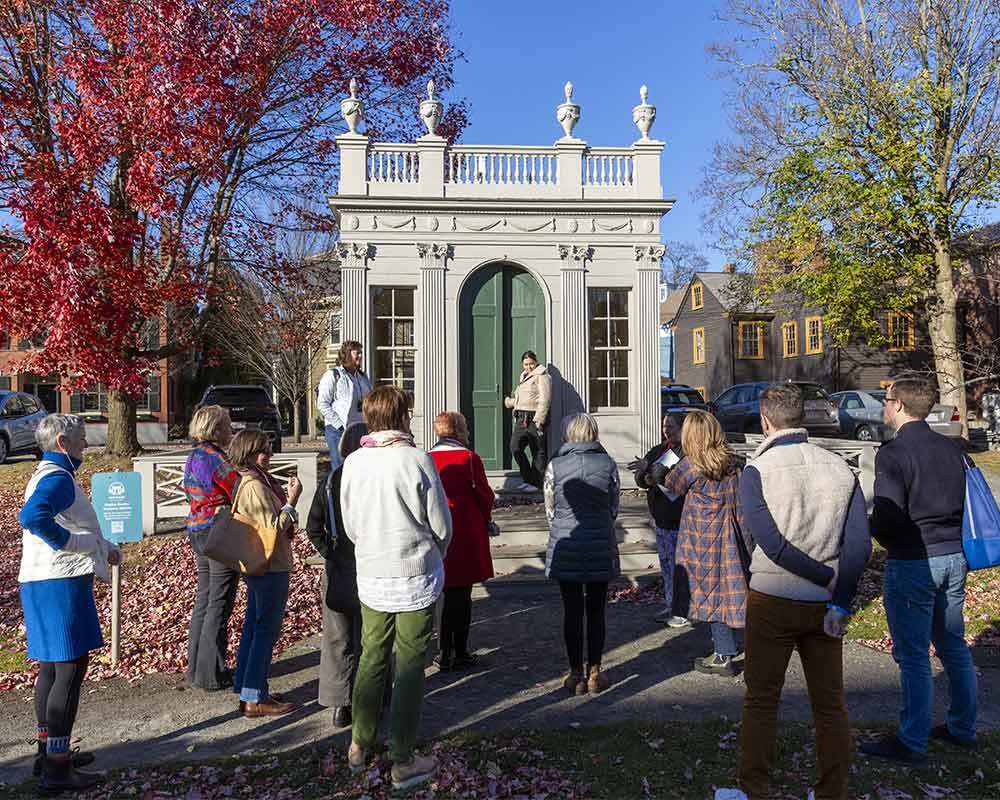
Brick by Brick: Salem's Hidden Architectural Stories, PEM Walking Tour. Peabody Essex Museum. Photo by Kathy Tarantola/PEM.
Things got a lot more elegant once the group headed into the Gardner-Pingree House and Feron rattled off floor to ceiling facts in the exquisitely decorated living room, moving from luxe window treatments to Samuel McIntire’s elaborate wood carvings. The day’s stories ranged from the lives of servants in the opulent houses to the problems arising between a mariner and his far wealthier neighbor, one of the first headline-worthy stories of gentrification in America.
On their way to the McIntire District to see more from PEM’s architecture collection, including the Ropes Mansion and its massive garden of fall blooms, Feron stopped in front of Turner’s Seafood. “You going to buy us lunch, Ben?” someone asked. Instead, Feron shared the story of how Alexander Graham Bell made the first long distance phone call from there in 1877. Next, Feron stopped to share a detail on the former Superior Court building along Federal Street. “It’s the only gargoyle I’ve seen in Salem,” he said, pointing overhead. (There may be a few plastic ones around.)
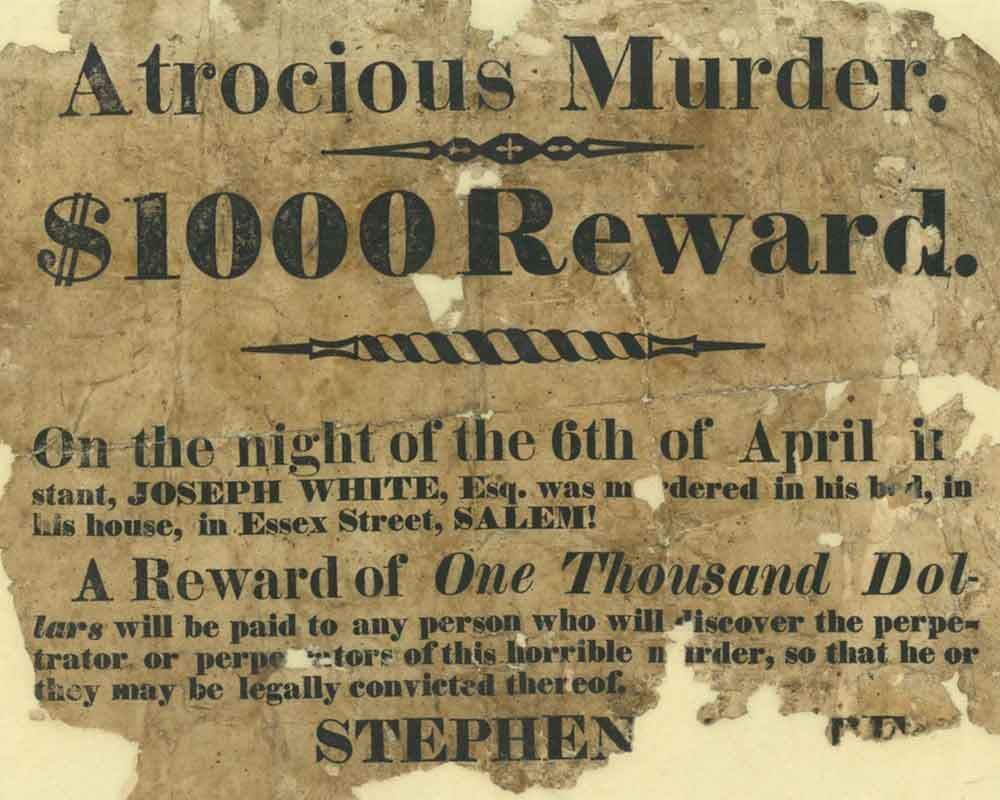
Stephen White. Atrocious murder : $1000 reward. 1830. Phillips Library, Peabody Essex Museum. HV6534.S25 W458 1830.
Speaking of gargoyles, PEM’s walking tours do get more scary than roof beams and balustrades. Sinister Streets: Witch Trials, Murders and Literary Legends takes visitors through some landmarks of the 1692 trials, plus the site of a gruesome murder that made headlines in 1830 and inspired Edgar Allan Poe.
A few days later, tourists turned up from Los Angeles, Salt Lake City, Washington, D.C. and Huntsville, Alabama to hear about the historic persecution of Salem Quakers and the sounds of the accused in the Salem jail that could be heard from the Ward House in 1692. They were also able to appreciate the architectural details of the elegant Federal-style Gardner-Pingree House, while taking in a tale of maritime money, greed, a custom-built murder weapon, forbidden love and a pair of naughty brothers.
Trials of Capt. Joseph J. Knapp, Jr. and George Crowninshield, Esq. : for the murder of Capt. Joseph White of Salem, on the night of the sixth of April 1830 (detail). Woodcut. Published by Charles Ellms, 1830. Phillips Library, Peabody Essex Museum. KF223.K57 K57 1830a
“We need to educate people,” said Ivanova,” but at the same time, entertain them — because, for the most part, they are on vacation and would like to have some fun.”
PEM’s historic walking tours run select times Thursdays through Mondays until November 23. Plan your Salem visit at pem.org/tours.
Tours
Salem Walking Tours
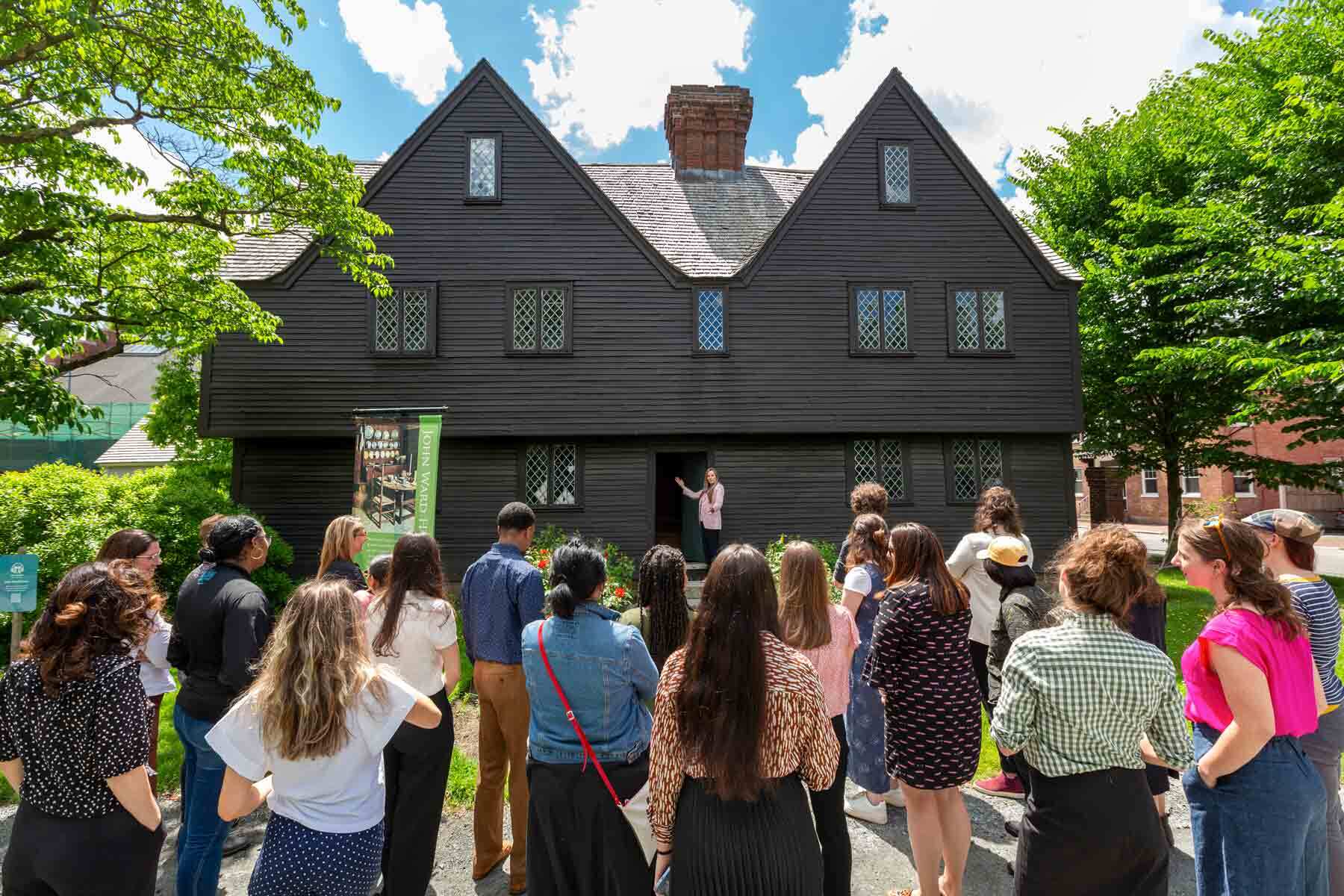
Blog
Behind the scenes of PEM’s Witch Trials Walk
8 min read

Blog
Halloween is over, but the witches are still marching
10 Min Read
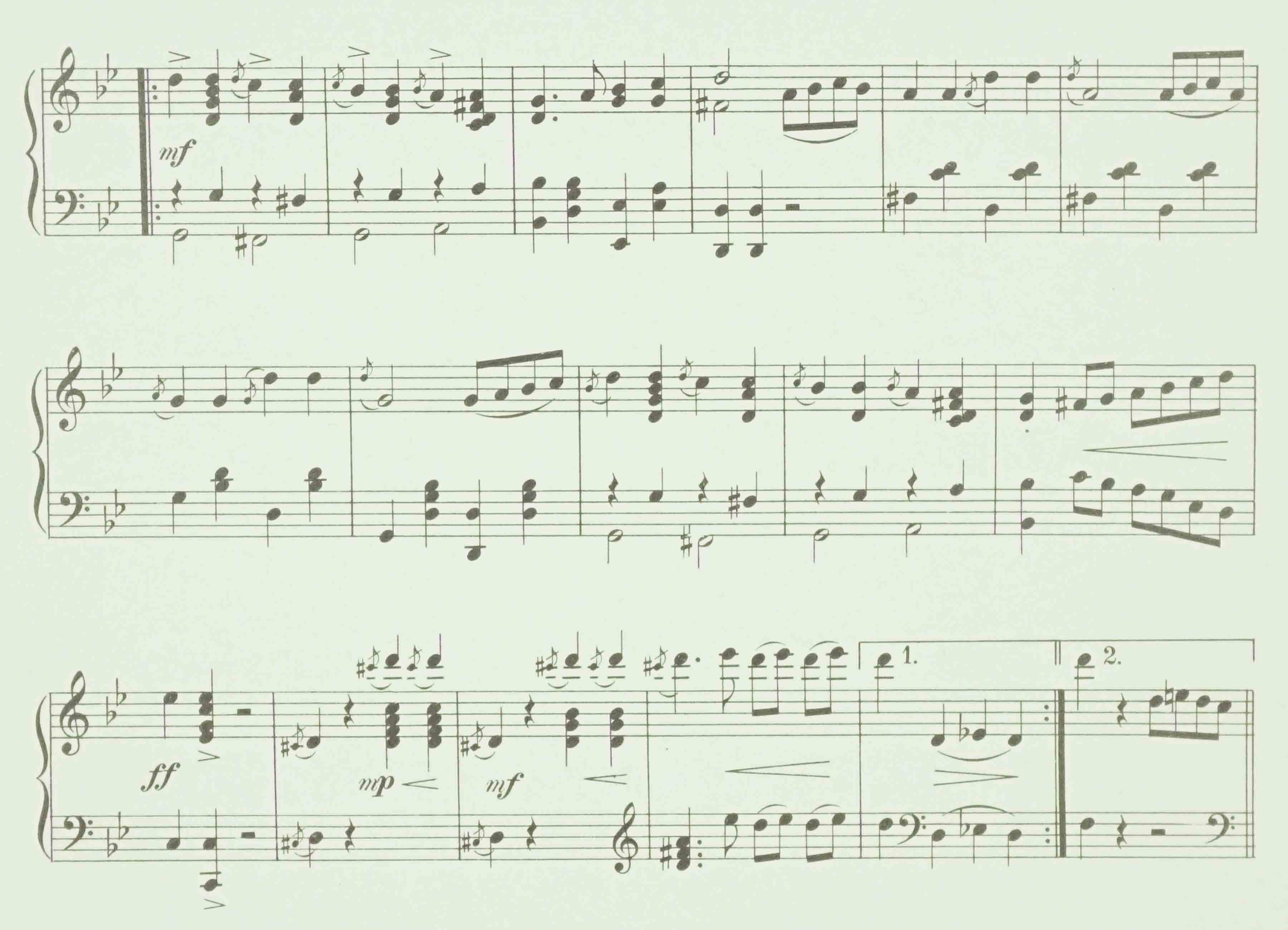
Blog
“Hocus Pocus” returns to Salem and to PEM’s historic Ropes Mansion
5 min read


